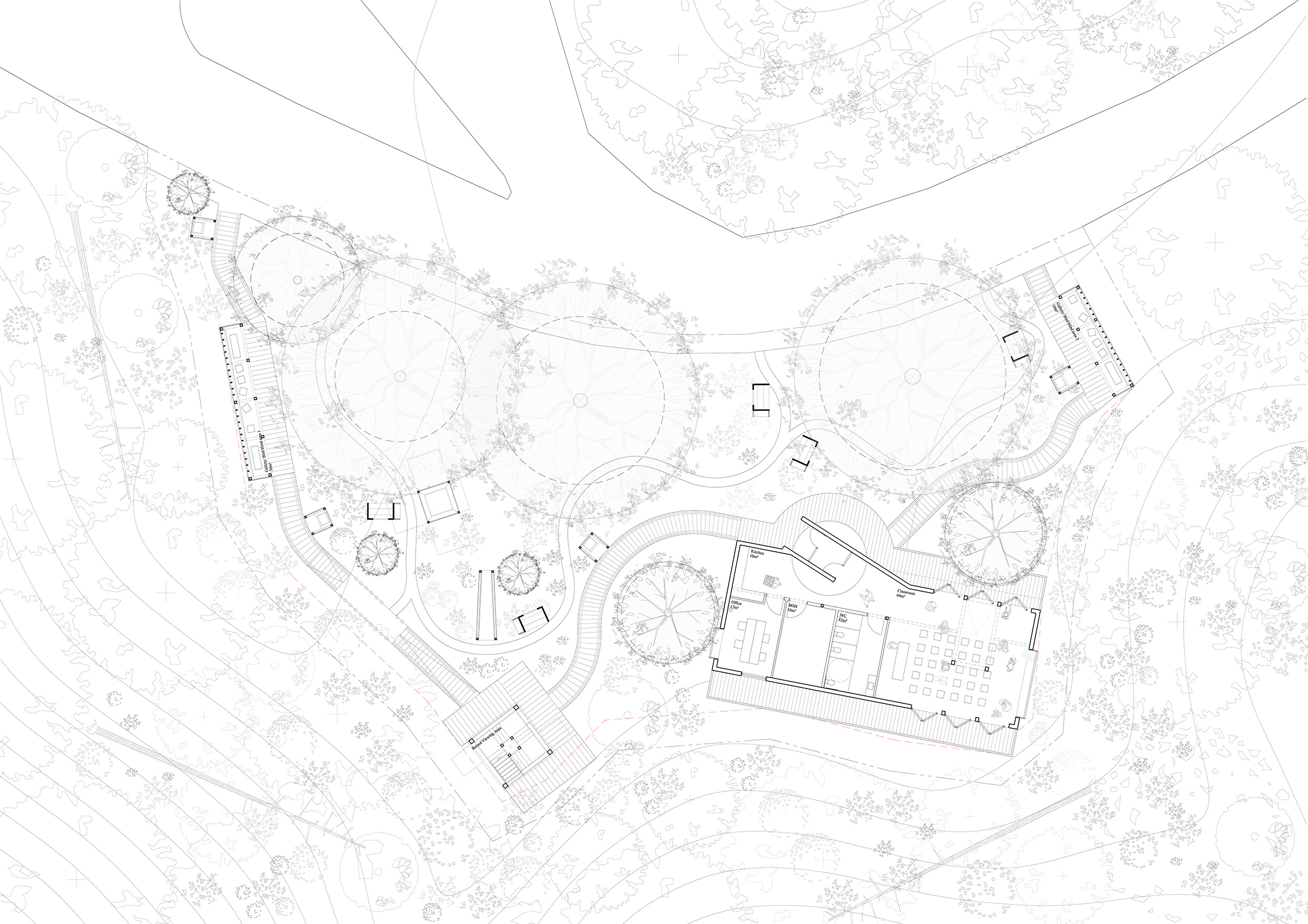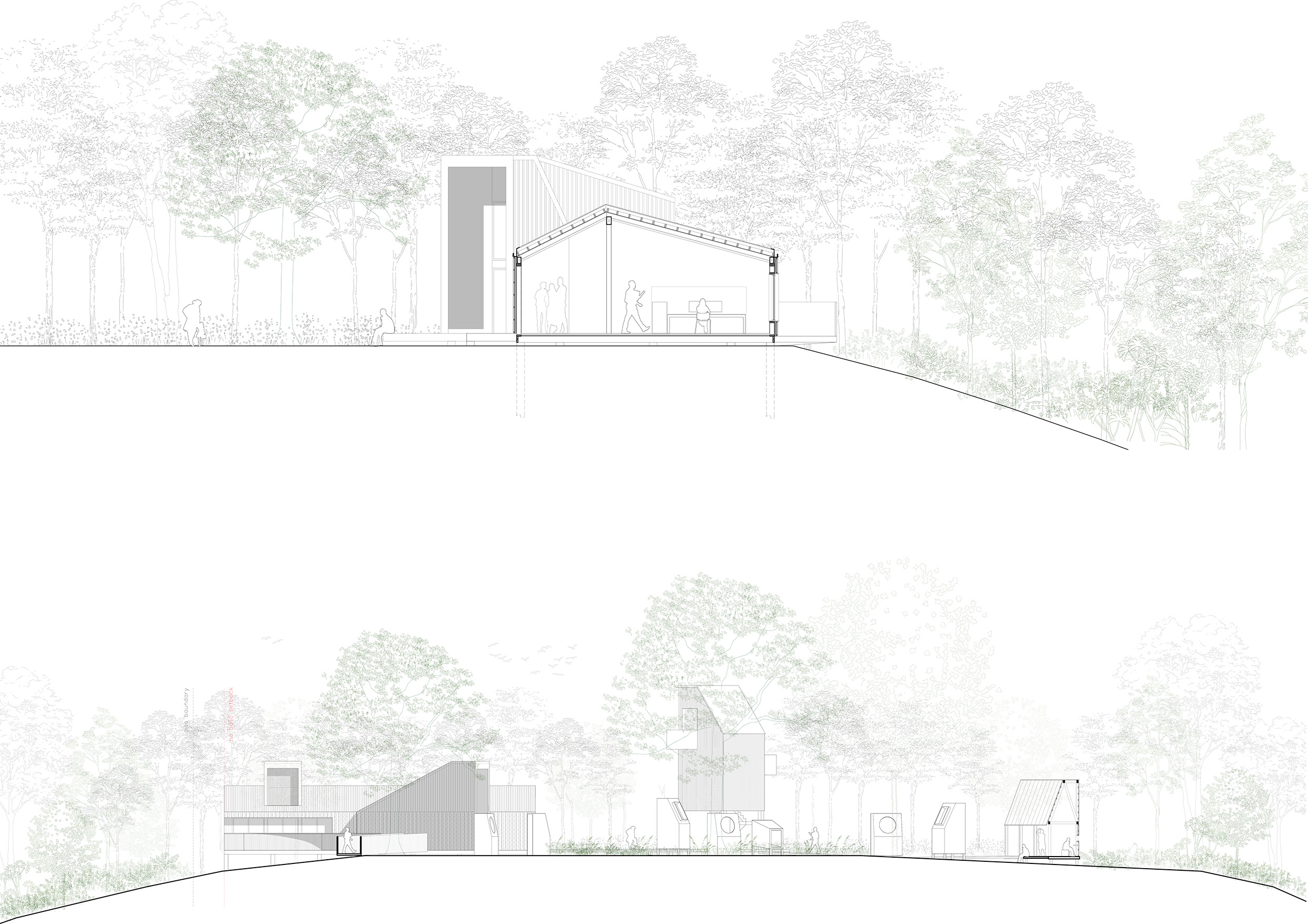SECOND YEAR UNDERGRADUATE
Bao Nguyen—Frank Leva Memorial Award
![]()
Bao Nguyen—Frank Leva Memorial Award

About the Award
Frank Leva Memorial Award:
Award for an undergraduate student enrolled full time in the Department of Architectural Science.
Glad Haven
Glade Haven is an exploration of how architecture can exist quietly within nature. This project chose to be introverted, to retreat and withhold, letting the land speak first. It is a place where architecture operates not through addition but through subtraction, where restrain becomes the most meaningful design gesture
The project begins with an act of restoration. Native species are reintroduced, replacing the plain, manicured lawn that exists solely for human occupation. This transformation shifts the site’s ecology from decorative to productive, reactivating the natural process that had been suppressed. As the ecological condition improves, it invites the return of birds, small mammals and insects who gradually become the new inhabitants of the land. This approach presents sustainability not through technology or ornamentation, but to find equilibrium - to allow the built and the natural to develop together.
The architecture unfolds along a meandering path acting as the project’s main organizing device. This path is not a promenade in the picturesque sense nor is it an efficient line of travel. Instead, It guides visitors through the changing terrain, connecting with a series of small and lightweight structures. These minimal pavilions act as viewfinders, galleries and resting places; they encourage a holistic engagement with nature, inviting visitors to stay awhile, to listen, to observe and learn from the land. In this setting, the path becomes more than circulation, it acts as a spatial narrative, it moves between the open field and shaded bird blinds, framing and cherishing moments of encounter.
The buildings are kept light and minimal, raised slightly above the ground and rest gently on slender columns and foundations, so that the terrain underneath can remain largely untouched. This approach reduces interventions and excavations, allowing the natural healing process to continue. Instead of dominating the landscape, the modest size building blends in with the surroundings. Staying true to the design narrative, the clerestory window and entrance hall frames the existing trees in a quiet gesture of respect and connection. Rather than clearing the site for architecture, the design adapts itself to the presence of the trees - allowing them to define the character of the space.
Ultimately, Glade Haven proposes a modest but hopeful vision for an architectural relationship with the land. It suggests that design can play an active role in healing by doing less - by shaping conditions rather than objects, and by creating spaces where people and nature coexist in quiet reciprocity. Over time, as plants reclaim the site and the buildings' weather into the landscape, Glade Haven will no longer appear as a designed environment, but as a place where the boundaries between human intention and natural growth have gently dissolved.
Frank Leva Memorial Award:
Award for an undergraduate student enrolled full time in the Department of Architectural Science.
Glad Haven
Glade Haven is an exploration of how architecture can exist quietly within nature. This project chose to be introverted, to retreat and withhold, letting the land speak first. It is a place where architecture operates not through addition but through subtraction, where restrain becomes the most meaningful design gesture
The project begins with an act of restoration. Native species are reintroduced, replacing the plain, manicured lawn that exists solely for human occupation. This transformation shifts the site’s ecology from decorative to productive, reactivating the natural process that had been suppressed. As the ecological condition improves, it invites the return of birds, small mammals and insects who gradually become the new inhabitants of the land. This approach presents sustainability not through technology or ornamentation, but to find equilibrium - to allow the built and the natural to develop together.
The architecture unfolds along a meandering path acting as the project’s main organizing device. This path is not a promenade in the picturesque sense nor is it an efficient line of travel. Instead, It guides visitors through the changing terrain, connecting with a series of small and lightweight structures. These minimal pavilions act as viewfinders, galleries and resting places; they encourage a holistic engagement with nature, inviting visitors to stay awhile, to listen, to observe and learn from the land. In this setting, the path becomes more than circulation, it acts as a spatial narrative, it moves between the open field and shaded bird blinds, framing and cherishing moments of encounter.
The buildings are kept light and minimal, raised slightly above the ground and rest gently on slender columns and foundations, so that the terrain underneath can remain largely untouched. This approach reduces interventions and excavations, allowing the natural healing process to continue. Instead of dominating the landscape, the modest size building blends in with the surroundings. Staying true to the design narrative, the clerestory window and entrance hall frames the existing trees in a quiet gesture of respect and connection. Rather than clearing the site for architecture, the design adapts itself to the presence of the trees - allowing them to define the character of the space.
Ultimately, Glade Haven proposes a modest but hopeful vision for an architectural relationship with the land. It suggests that design can play an active role in healing by doing less - by shaping conditions rather than objects, and by creating spaces where people and nature coexist in quiet reciprocity. Over time, as plants reclaim the site and the buildings' weather into the landscape, Glade Haven will no longer appear as a designed environment, but as a place where the boundaries between human intention and natural growth have gently dissolved.





